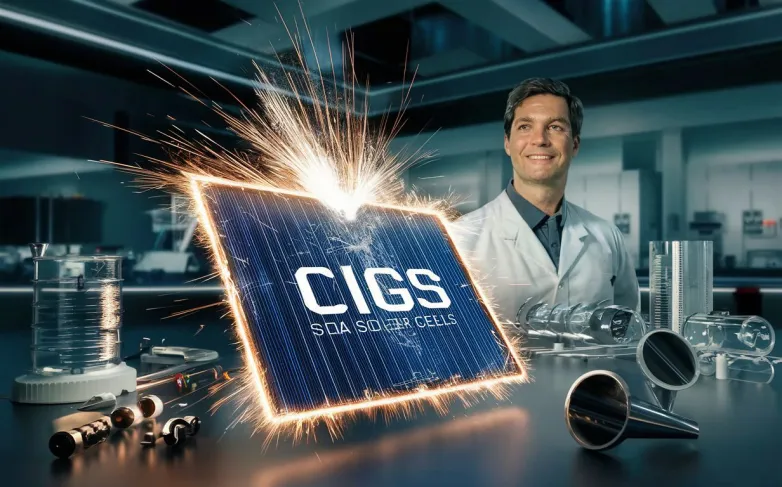CIGS Solar Cell Breaks Efficiency Record, Challenges Silicon
- Breakthrough in CIGS solar cell efficiency sets new world record, paving the way for competitive renewable energy options in the market.

A new world record for solar cell efficiency has been set by CIGS thin films, with a verified efficiency of 23.54 percent, surpassing the previous record held by Solar Frontier of Japan. While CIGS solar cells are still less efficient than silicon or perovskite cells, they are showing potential to catch up and remain relevant in the renewable energy market.
The composition of CIGS cells includes copper, indium, gallium, and selenide, coated on window glass along with silver and sodium. Researchers at Uppsala University have made advancements in adjusting gallium concentrations in different parts of the cell, leading to improved efficiency. Despite the expensive materials used in CIGS cells, their thin film nature makes them a competitive alternative for standalone solar cells and potential candidates for tandem solar cell technology.
The study published in Nature Energy highlights the potential of CIGS technology as a reliable and efficient option for solar energy generation. With advancements in efficiency across multiple solar cell technologies, tandem cells could become more widespread in the future, offering higher energy generation capabilities.
What recent breakthrough has been made in CIGS solar cell efficiency?
- Researchers at Uppsala University have made advancements in adjusting gallium concentrations in different parts of CIGS solar cells, leading to a new world record efficiency of 23.54 percent.
- This efficiency surpasses the previous record held by Solar Frontier of Japan.
- Despite being less efficient than silicon or perovskite cells, CIGS cells are showing potential to catch up and remain relevant in the renewable energy market.
- The composition of CIGS cells includes copper, indium, gallium, and selenide, coated on window glass along with silver and sodium.
- CIGS cells are a competitive alternative for standalone solar cells and potential candidates for tandem solar cell technology due to their thin film nature.
- The study published in Nature Energy highlights the potential of CIGS technology as a reliable and efficient option for solar energy generation.
- Advancements in efficiency across multiple solar cell technologies could lead to more widespread use of tandem cells in the future, offering higher energy generation capabilities.
Also read


